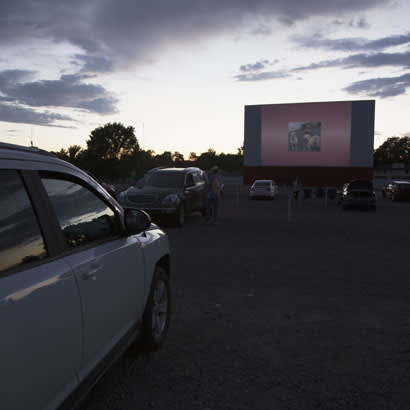
The NRPA Parks Snapshot provides the latest data on how park and recreation leaders from across the country are confronting the Coronavirus Disease 2019 (COVID-19) pandemic. I hope you find this information helpful as you make decisions at your agency during this uncertain time, while continuing to follow the guidance provided by your local and state governments and health officials, as well as the Centers for Disease Control and Prevention (CDC).
Among the key findings from the August 19-21 survey:
What's Open/What's Closed
As we approach the end of the summer, we are seeing park and recreation agencies opening many of their amenities to the public. This includes virtually all agencies reporting that all their trails (99 percent) and parks (local parks: 98 percent; regional parks: 93 percent) are open.
Other amenities that agencies report are fully open include:
- Golf courses (99 percent)
- Dog parks (98 percent)
- Tennis courts (99 percent)
- Community gardens (93 percent)
- Skateparks (90 percent)
- Campgrounds (86 percent)
- Outdoor sports fields (82 percent)
- Temporary restroom facilities (82 percent)
- Playgrounds (76 percent)
- Permanent restrooms at outdoor amenities (75 percent)
- Basketball courts (72 percent)
- Recreation centers (50 percent)
While more amenities and facilities are beginning to open, the following park and recreation amenities have remained closed at many agencies:
- Senior centers (73 percent)
- Drinking fountains (52 percent)
Park Activation Activities
Staff at four in five agencies are leading park activation activities, promoting park and open space usage. Currently, 45 percent of these agencies have a mix of both formal and informal park activation activities occurring. Twenty-three percent have formal activities only, while 19 percent have informal activities. Examples of these park activation activities include:
- Small group naturalist programs
- Virtual learning centers
- Drive-in movies in the park
- Sports and craft kits
Plans for Educational Support and the Fall
As many schools begin or plan to begin soon, park and recreation leaders are looking for ways to support students and families. Two-thirds of all park and recreation agencies are making plans to support students this fall, whether through expanded childcare offerings or by offering resources to support education efforts. These include:
- Offering expanded childcare services and hours to support virtual education (26 percent)
- Providing outdoor facility space to schools for classrooms or activities (22 percent)
- Expanding access to free WiFi to support virtual education for students (18 percent)
- Incorporating supplemental education activities — like physical activity, music, arts, STEM, reading/writing, social skills — into childcare programs (16 percent)
- Providing indoor facility space to schools for classrooms or activities (16 percent)
The relationship between local school districts and local park and recreation agencies is pivotal. But fewer than half of all agency leaders report that their local school districts are coordinating with them in the decision-making process. The top ways school districts are coordinating with park and recreation agencies are:
- Identifying additional facility space for learning (e.g., space for outdoor classes/activities, recreation centers used for additional classrooms)
- Provide expanded childcare offerings due to suspended or decreased in-person school offerings
- Utilize park and recreation staff with subject matter expertise and unique skills (e.g., environmental education, physical education, music, arts)
Emergency Preparedness
Prior to the pandemic, 77 percent of local park and recreation agencies had an emergency preparedness plan (e.g., procedures, communication tactics, inventories of materials and equipment, psychological aid for affected staff) in place. Of those 77 percent:
- 73 percent of agency leaders believe their initial plan prepared them for the emergency, but additional adjustments were made to their emergency plan to address particulars associated with the pandemic
- 39 percent believe the plan did not prepare their agency for the emergency at all
- 8 percent believe the plan prepared their agency well for this crisis
Strategic Priorities to Health Equity and Social Justice
COVID-19 has impacted many local park and recreation agencies’ strategic priorities as it relates to health equity and social justice. Six in seven park leaders note that the pandemic has impacted strategic priorities in health equity and social justice at their agency. These impacts include:
- Spotlighting a bigger role for park and recreation professionals in supporting the health and social needs of community members (65 percent)
- Emphasizing the importance of making sure communications reach all people (52 percent)
- Creating a deeper understanding of health and social inequities across our community (29 percent)
In addition, here are highlights of the survey results from specific segments:
The full results of the survey include verbatim comments shared by park and recreation leaders across the nation on their agencies’ experiences in confronting COVID-19. This is an uncertain time with many unanswered questions, and we encourage you to continue the conversation with your colleagues around how your agency is confronting COVID-19 on NRPA Connect.
For more information and to see results from additional surveys, visit NRPA's Parks Snapshot Surveys webpage.
For more information about NRPA’s response to COVID-19, as well as available resources for park and recreation professionals, please see our Coronavirus Disease 2019 (COVID-19) webpage.
Kevin Roth is Vice President of Research, Evaluation and Technology at NRPA.

